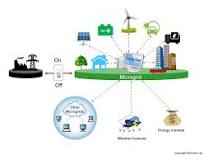DATA CENTER. A data center is a facility used to house computer systems and associated components, such as telecommunications and storage systems. It generally includes redundant or backup power supplies, redundant data communications connections, environmental controls (e.g. air conditioning, fire suppression) and various security devices.
With the emergence and proliferation of services and applications such as cloud computing and social networks, data centers play an ever important role. It is predicted that global
data center IP traffic will grow 3-fold from 2014 to 2019 with a compound annual growth rate (CAGR) of 25 percent [1].
At the same time, the high energy consumption of data centers is drawing more and more attention due to economic, social, and environmental concerns. Data center electricity consumption in the U.S. alone is projected to increase to roughly 140 billion kilowatt-hours annually by 2020, costing $13 billion in electricity bills and emitting nearly 100 million tons of carbon pollution per year [2].
Big Sur servers inside the Facebook data center use artificial intelligence (AI) to power services like speech and text translations, photo classifiers, and real-time video classification. For Google, Deep Learning AI assist with services such as speech and image recognition, and natural language generation.
SingularityNET is a complex project that started as an AI-as-a-Service marketplace with the idea to evolve it into an entirely self-organizing AI network. The AI Agents within this autonomous network will employ AI to outsource jobs to each other and evolve with each other to further develop the system. [3]
A large data center is an industrial-scale operation using as much electricity as a small town.
REFERENCES
[1] “Cisco Global Cloud Index: Forecast and Methodology, 2014-2019,”
[2] “America’s data centers consuming and wasting growing amounts of
energy,” https://www.nrdc.org/sites/default/files/data-center-efficiency-assessment-IB.pdf
[3] “SingularityNET: Learn About The World’s First Public AI Network On The Blockchain”, Crypto Research by William Thrill https://hackernoon.com/a-better-insight-of-singularitynet-607fd64e18c4



